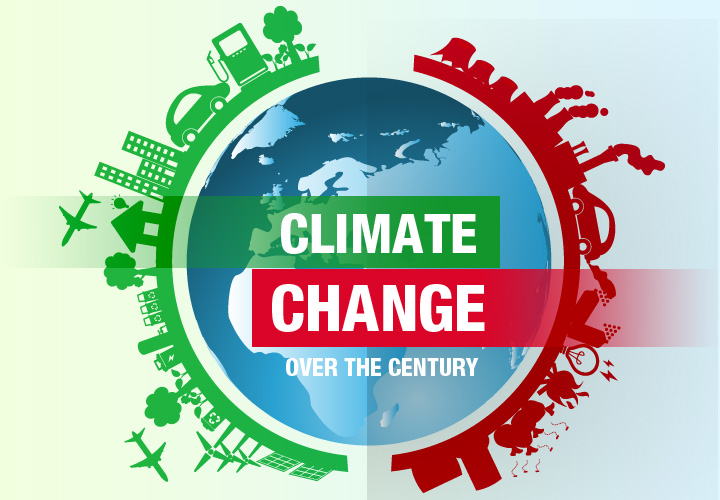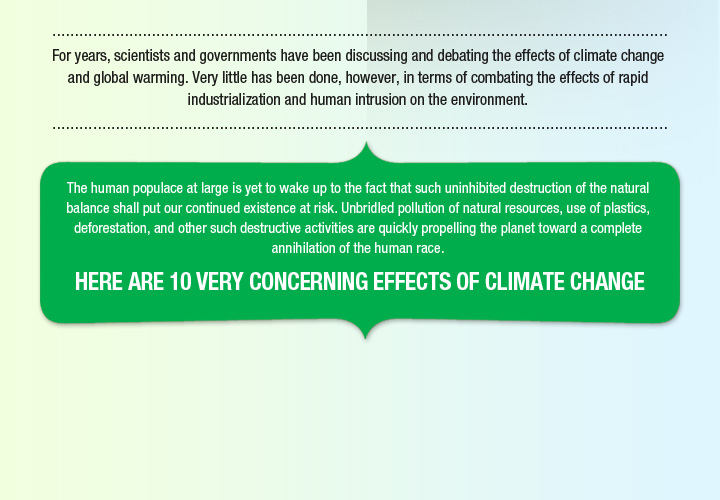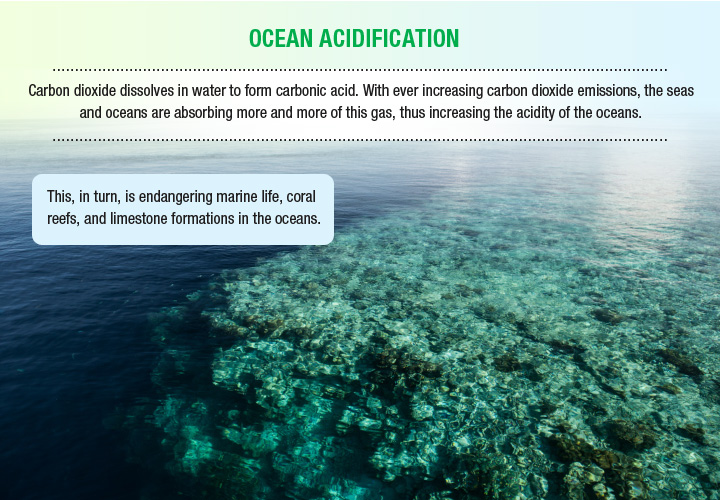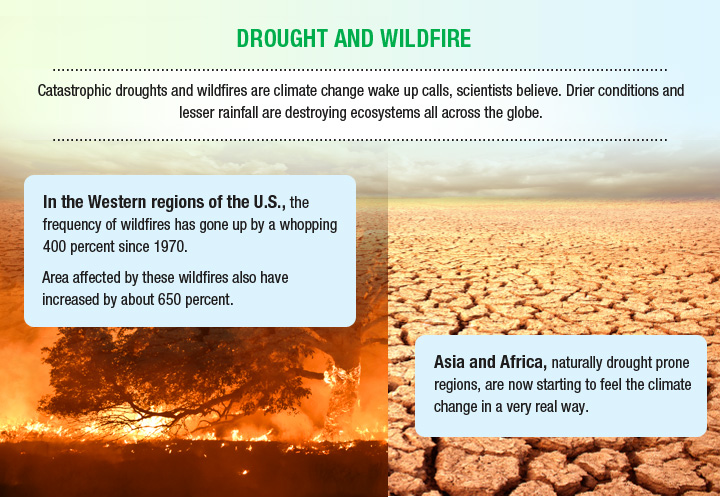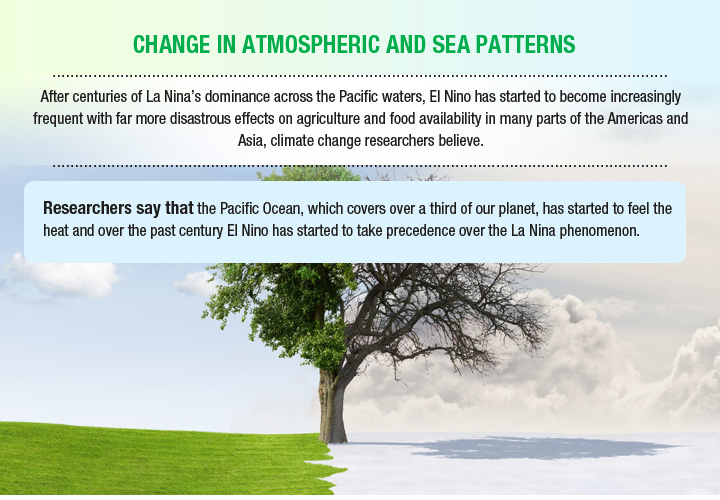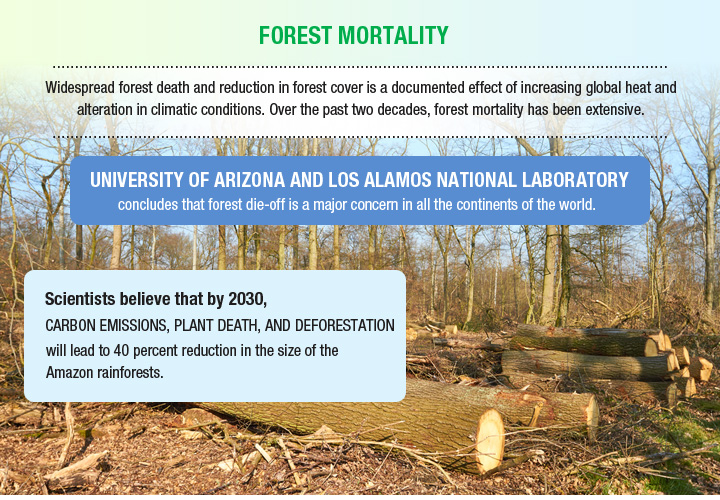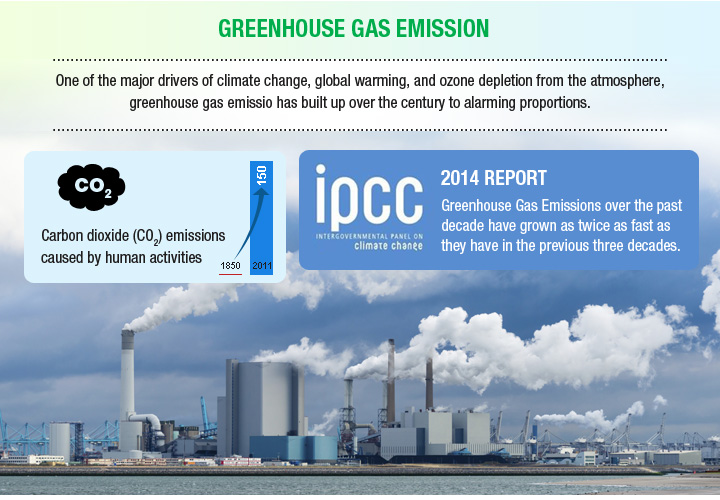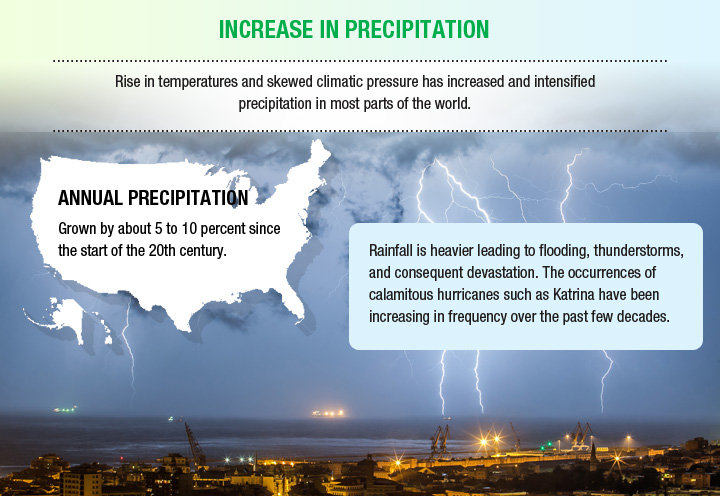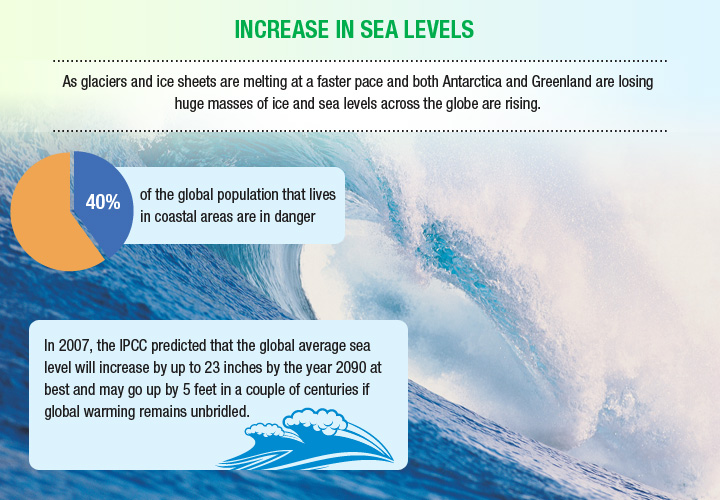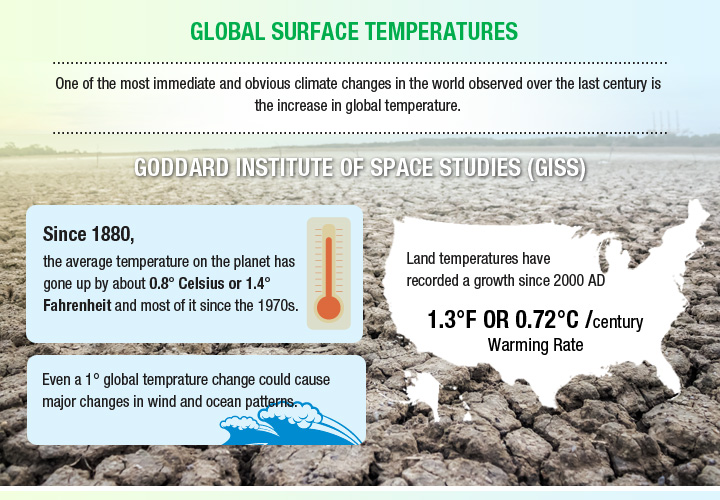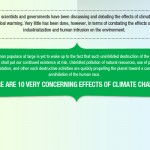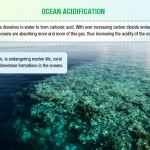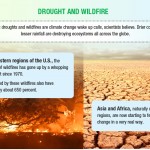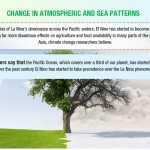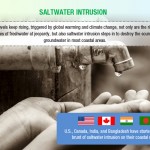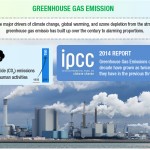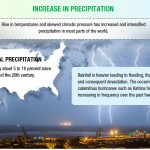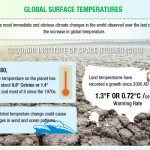For years now scientists and governments have discussed and debated the effects of climate change and global warming. Very little has been done, however, in terms of combating the effects of rapid industrialization and human intrusion on the environment. The human populace at large is yet to wake up to the fact that such uninhibited destruction of the natural balance shall put our continued existence at risk. Unbridled pollution of natural resources, use of plastics, deforestation, and other such destructive activities are quickly propelling the planet towards a complete annihilation of the human race. Here are 10 very concerning effects of climate change.
1. Global Surface Temperatures
One of the most immediate and obvious climate changes in the world observed over the last century is the increase in global temperature. According to a study by Goddard Institute of Space Studies (GISS), since 1880, the average temperature on the planet has gone up by about 0.8° Celsius or 1.4° Fahrenheit and most of it since the 1970s. This is alarming because even a 1° global change could cause major changes in wind and ocean patterns. In the U.S. alone, land temperatures have recorded a pronounced growth since 2000 AD. The warming rate of the country is pegged at about 1.3°F or 0.72°C per century.
2. Increase in Sea Levels
One of the most important effects of global warming and climate change is the rise in sea levels. As glaciers and ice sheets are melting at a faster pace and both Antarctica and Greenland are losing huge masses of ice, sea levels across the globe are rising putting at risk over 40 percent of the global population that lives in coastal areas (within 100 kilometers of the sea). In the past century, global mean sea level has gone up between 4 and 10 inches. In 2007, the IPCC predicted that the global average sea level will increase by up to 23 inches by the year 2090 at best and may go up by 5 feet in a couple of centuries if global warming remains unbridled.
3. Changing Season Cycles
Seasonal changes and change in eco systems due to global warming have become evident. In the 1980s, the growing season in many parts of the northern hemisphere increased by almost a fortnight. This change was attributed to the increased industrialization in these parts. The onset of spring and summer occurred about a week before expected dates and lasted longer by about 4 days. “Milder winter temperatures will decrease heavy snowstorms“, predicted the United Nations Intergovernmental Panel on Climate Change (IPCC).
4. Increase in Precipitation
Rise in temperatures and skewed climatic pressure has increased and intensified precipitation in most parts of the world. Annual precipitation in the U.S. has grown by about 5 to 10 percent since the start of the 20th century. Rainfall is heavier leading to flooding, thunderstorms, and consequent devastation. The occurrences of calamitous hurricanes such as Katrina are increasing in frequency over the past few decades. Soil erosion and spoilage of crops are effects of increased precipitation and flooding. Apart from these, large scale damage to life and property is also witnessed.
5.Greenhouse Gas Emission
Greenhouse gas emission, one of the major drivers of climate change, global warming, and ozone depletion from the atmosphere, has built up over the century to alarming proportions. In 2011, carbon dioxide (CO₂) emissions caused by human activities were estimated to be about 150 times higher than they were in 1850. The Intergovernmental Panel on Climate Change (IPCC) 2014 report said that greenhouse gas emissions over the past decade have grown as twice as fast as they have in the previous 3 decades.
6. Saltwater Intrusion
As sea levels keep rising, triggered by global warming and climate change, not only are the rivers and sources of freshwater at jeopardy, saltwater intrusion steps in to destroy the sources of groundwater in most coastal areas. Countries like the U.S., Canada, India, and Bangladesh have started to feel the brunt of saltwater intrusion on their coastal regions. Predictions are that over half the world’s population will experience severe water crisis by the year 2050.
7. Forest Mortality
Widespread forest death and reduction in forest cover is a documented effect of increasing global heat and alteration in climatic conditions. Over the past two decades, forest mortality has been extensive. A research study conducted by the University of Arizona and Los Alamos National Laboratory in the U.S. concludes that forest die-off is a major concern in all continents of the world. Scientists believe that by 2030 massive carbon emissions and consequent plant death combined with deforestation will lead to a 40 percent reduction in the size of the Amazon rainforests.
8. Change in Atmospheric and Sea Patterns
After centuries of La Nina’s dominance across the Pacific waters, El Nino has started to become increasingly frequent with far more disastrous effects on agriculture and food availability in many parts of the Americas and Asia, climate change researchers believe. Researchers say that the Pacific Ocean which covers over a third of our planet has started to feel the heat and over the past century El Nino has started to take precedence over the La Nina phenomenon.
9. Drought and Wildfire
Catastrophic droughts and wildfires are climate change wake up calls, scientists believe. Drier conditions and lesser rainfall are destroying ecosystems all across the globe. Through the western regions of the U.S., the frequency of wildfires has gone up by a whopping 400 percent since 1970. The areas affected by these wildfires also have increased by about 650 percent. Asia and Africa, naturally drought prone regions are now starting to feel the climate change in a very real way. In 2013, the US National Academy of Sciences warned that droughts and famines may occur simultaneously in many parts of the world due to global warming and climate change jeopardizing the lives of millions.
10. Ocean Acidification
Carbon dioxide dissolves in water to form carbonic acid. With ever increasing carbon dioxide emissions, the seas and oceans are absorbing more and more of this gas thus increasing the acidity of the oceans. This is turn is endangering marine life, coral reefs, and limestone formations in the oceans. According to scientists, ocean acidity has increased by about 150 percent since the beginning of the industrial revolution.


